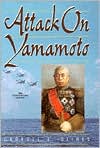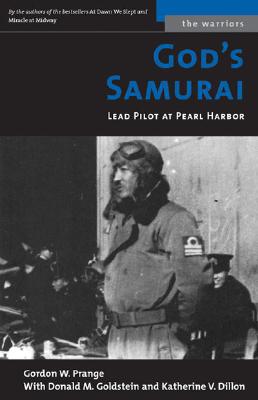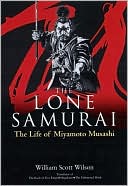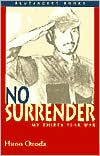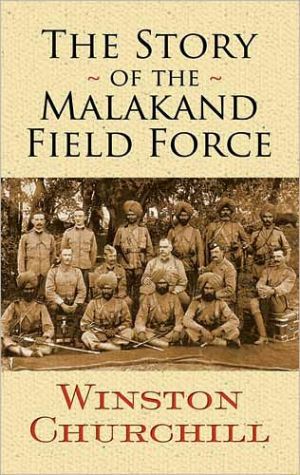Attack on Yamamoto
Here is the dramatic story of the American mission to shoot Japan's greatest admiral out of the sky, told by the award-winning author of the Doolittle Raid. On April 18, 1943, against overwhelming odds, Yamamoto's plane was shot down. Following the mission, a controversy arose: Which pilot actually shot down Yamamoto's plane? C.V. Glines turns his formidable research skills on this extraordinary tale of adventure and detection. This updated edition contains the official 1993 Air Force...
Search in google:
Here is the dramatic story of the American mission to shoot Japan's greatest admiral out of the sky, told by the award-winning author of the Doolittle Raid. On April 18, 1943, against overwhelming odds, Yamamoto's plane was shot down. Following the mission, a controversy arose: Which pilot actually shot down Yamamoto's plane? C.V. Glines turns his formidable research skills on this extraordinary tale of adventure and detection. This updated edition contains the official 1993 Air Force decision on this controversy. Publishers Weekly Admiral Isoroku Yamamoto, commander of the Japanese navy and mastermind of the attack on Pearl Harbor, was killed on April 18, 1943, in an aerial ambush by a squadron of U.S. Army P-38s based on Guadalcanal. Glines ( The Doolittle Raid ) describes how the trap was set after U.S. naval intelligence discovered that Yamamoto would be flying between New Guinea and Bougainville on that date, and describes in detail how it was sprung. For nearly half a century a controversy has raged over which P-38 pilot deserves credit for the kill. Until now the leading contender has been Thomas G. Lanphier Jr., who until his death in 1987 was persistent in calling attention to himself as ``the man who got Yamamoto.'' Glines here painstakingly collects accounts from eyewitnesses (including the testimony of one of the Japanese escort pilots) plus evidence at the crash site, and concludes that the credit belongs to Lanphier's wingman, Rex T. Barber. All this makes for engrossing reading, but the most memorable element is Glines's portrait of Lanphier, a feverishly self-glorifying character whose behavior was rooted in his postwar political ambitions. Photos. (July)
\ Publishers Weekly - Publisher's Weekly\ Admiral Isoroku Yamamoto, commander of the Japanese navy and mastermind of the attack on Pearl Harbor, was killed on April 18, 1943, in an aerial ambush by a squadron of U.S. Army P-38s based on Guadalcanal. Glines ( The Doolittle Raid ) describes how the trap was set after U.S. naval intelligence discovered that Yamamoto would be flying between New Guinea and Bougainville on that date, and describes in detail how it was sprung. For nearly half a century a controversy has raged over which P-38 pilot deserves credit for the kill. Until now the leading contender has been Thomas G. Lanphier Jr., who until his death in 1987 was persistent in calling attention to himself as ``the man who got Yamamoto.'' Glines here painstakingly collects accounts from eyewitnesses (including the testimony of one of the Japanese escort pilots) plus evidence at the crash site, and concludes that the credit belongs to Lanphier's wingman, Rex T. Barber. All this makes for engrossing reading, but the most memorable element is Glines's portrait of Lanphier, a feverishly self-glorifying character whose behavior was rooted in his postwar political ambitions. Photos. (July)\ \ \ \ \ Library JournalOn April 18, 1943, a flight of Army P-38 fighter planes intercepted and shot down the bomber carrying Admiral Isoroku Yamamoto, commander in chief of the Japanese Combined Fleet. This book is less a popular reprise of the event than an attempt to settle the controversy over which of two American pilots actually killed the enemy warlord. Glines, the author of other aviation dramas (e.g., The Doolittle Raid, LJ 10/15/88; Doolittle's Tokyo Raiders, 1981), is not impartial about the matter. This is a lively and well-researched account, but frequently repetitious. Still, it is the best since Davis Burke's Get Yamamoto (Random, 1969. o.p.). For general collections only.-- Raymond L. Puffer, U.S. Air Force History Prog., Los Angeles\ \ \ BooknewsAn account of the longest fighter intercept mission in history, the American mission to shoot down the aircraft carrying Japan's greatest admiral. Presents evidence on the controversy over which pilot actually shot down the plane, and includes interviews with members of the P-38 Lightning squadron. Includes b&w photos. Annotation c. Book News, Inc., Portland, OR (booknews.com)\ \
